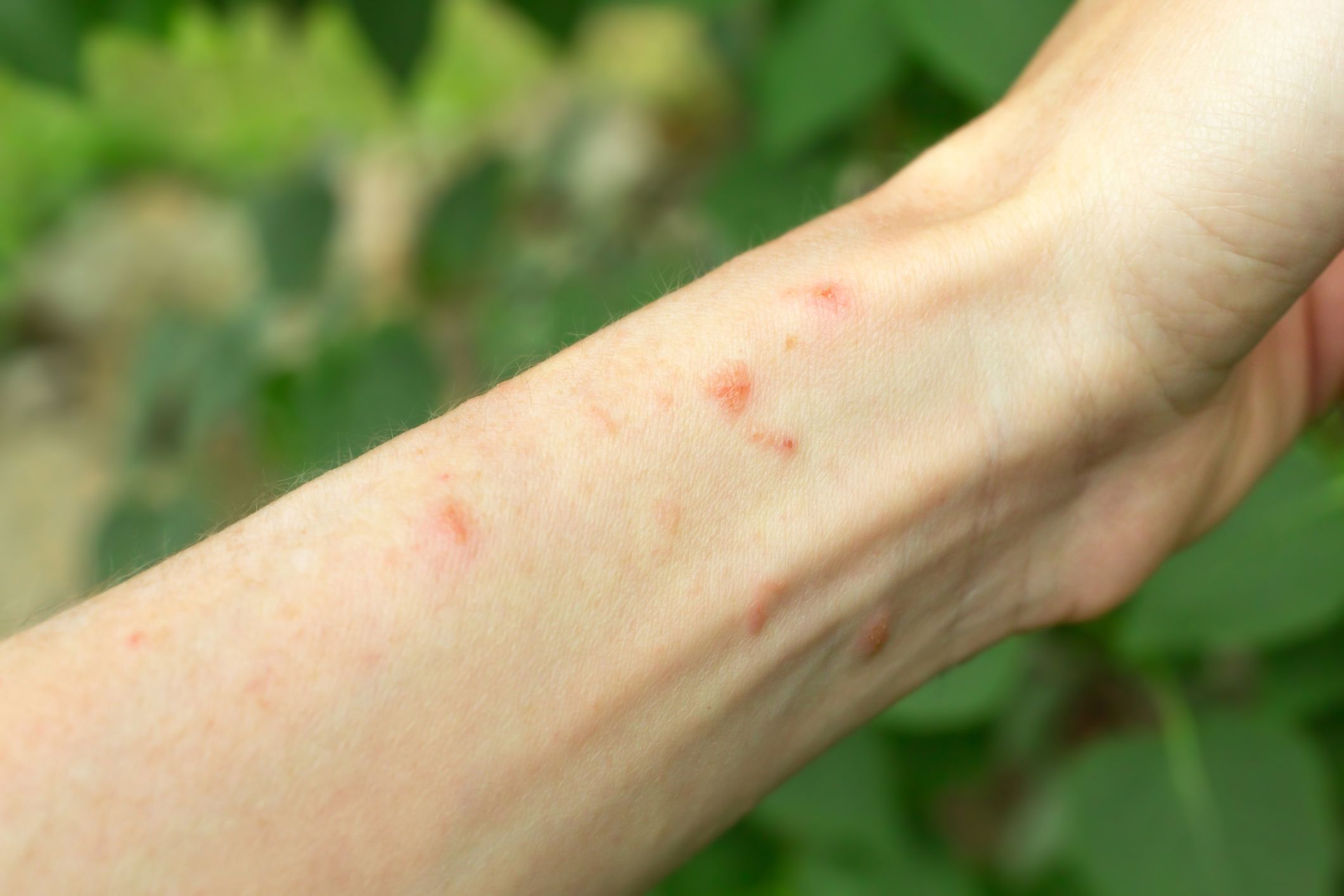Shingles vs. Poison Ivy: How to Tell the Difference (With Pictures)

Key points
- Pain, Burning, or Tingling: This is often the first symptom and can occur several days before any rash is visible. The pain can be intense.
- One-Sided Rash: A red rash typically appears a few days after the pain starts. It almost always develops on a single side of the body, often wrapping around the torso in a band or stripe.
- Fluid-Filled Blisters: The rash quickly develops into clusters of small blisters that break open and crust over.
- Flu-Like Symptoms: Many people experience fever, headache, chills, and fatigue.
A red, blistering rash can be alarming, and it's easy to confuse two common culprits: shingles and poison ivy. While they can look similar at a glance, they stem from completely different causes and require distinct treatments. Mistaking one for the other can delay proper care and, in the case of shingles, potentially lead to serious complications.
This comprehensive guide, informed by medical sources and real-world experiences, will help you understand the crucial differences in their symptoms, causes, rash patterns, and treatments.
At a Glance: Shingles vs. Poison Ivy
For a quick comparison, here’s a breakdown of the key differences between these two conditions.
| Feature | Shingles (Herpes Zoster) | Poison Ivy (Allergic Contact Dermatitis) |
|---|---|---|
| Underlying Cause | Reactivation of the varicella-zoster virus (chickenpox virus). | Allergic reaction to urushiol oil from poison ivy, oak, or sumac plants. |
| Primary Sensation | Pain, often described as burning, stabbing, or shooting. Itching can also occur. | Intense, overwhelming itching. Pain can occur with severe rashes or scratching. |
| Rash Pattern | A cluster of blisters in a single stripe or band on one side of the body or face. | Streaks, lines, or patches that can appear anywhere on the body exposed to the oil. |
| Other Symptoms | Often preceded or accompanied by flu-like symptoms: fever, chills, headache, fatigue. | Typically no systemic symptoms. Severe reactions can cause swelling or trouble breathing. |
| How It Starts | Pain, tingling, or burning on the skin days before the rash appears. | Itching may begin hours to days after exposure to the plant. |
| Is It Contagious? | You can't catch shingles, but direct contact with blister fluid can transmit chickenpox to someone who isn't immune. | The rash itself is not contagious, but the urushiol oil can be spread from skin, clothing, or pets. |
What Is Shingles? (Herpes Zoster)
Shingles is a viral infection that stems from the varicella-zoster virus—the same one that causes chickenpox. After you recover from chickenpox, the virus doesn't leave your body. Instead, it lies dormant in your nerve tissue. Years later, it can reactivate and travel along nerve pathways to your skin, causing shingles.
Key Symptoms of Shingles
According to the Centers for Disease Control and Prevention (CDC), the most recognizable symptoms include:
- Pain, Burning, or Tingling: This is often the first symptom and can occur several days before any rash is visible. The pain can be intense.
- One-Sided Rash: A red rash typically appears a few days after the pain starts. It almost always develops on a single side of the body, often wrapping around the torso in a band or stripe.
- Fluid-Filled Blisters: The rash quickly develops into clusters of small blisters that break open and crust over.
- Flu-Like Symptoms: Many people experience fever, headache, chills, and fatigue.
Visual Guide: What Shingles Looks Like
A shingles rash is distinctive because it follows a dermatome—the area of skin supplied by a single nerve. This is why it appears as a stripe and stops at the body's midline.
!A typical shingles rash appears as a band of blisters on one side of the torso.:max_bytes(150000):strip_icc()/GettyImages-1666897334-0d3c7f986fe04a439e749ec9de295243.jpg) Image Source: Verywell Health, Suriyawut Suriya / Getty Images
What Is Poison Ivy? (Allergic Contact Dermatitis)
A poison ivy rash is a classic example of allergic contact dermatitis. It’s caused by a reaction to an oily resin called urushiol, found in the leaves, stems, and roots of poison ivy, poison oak, and poison sumac. According to the American Academy of Dermatology (AAD), up to 85% of people are allergic to urushiol.
Key Symptoms of Poison Ivy
The reaction is characterized by:
- Intense Itching: This is the hallmark symptom and often the most bothersome.
- Red Rash with Bumps or Blisters: The rash develops where your skin made contact with the oil.
- Streaks or Lines: The rash often appears in linear patterns, showing where the plant brushed against you.
- Swelling: The affected area can become swollen.
Visual Guide: What Poison Ivy Looks Like
Unlike the contained band of shingles, a poison ivy rash can appear on various parts of the body and often has a distinct linear or streaky appearance.
 Image Source: Prevention, Jena Ardell / Getty Images
Image Source: Prevention, Jena Ardell / Getty Images
Atypical Presentations and Overlapping Symptoms
While the classic signs are distinct, sometimes the lines can blur, leading to confusion.
- Disseminated Shingles: In people with weakened immune systems, the shingles rash can be more widespread, affecting three or more dermatomes and potentially crossing the midline. This is a serious condition requiring immediate medical care.
- Pain vs. Itch: While shingles is known for pain, the rash can also be itchy, especially as it heals. Conversely, a very severe poison ivy reaction can be painful, particularly if the skin is raw from scratching.
- Black-Spot Poison Ivy: In some cases, urushiol oil can stain the skin black, appearing as black spots or streaks before or along with the rash.
A compelling real-world example from Newsweek highlights this confusion. A 22-year-old woman assumed her one-sided arm rash was from pool chlorine or poison ivy. It was only after consulting with Reddit users and her doctor that she was diagnosed with shingles—a condition she, like many, associated only with older adults.
The Dangers of Misdiagnosis: Why Getting It Right Matters
Incorrectly self-diagnosing your rash can lead to ineffective treatment and potentially serious consequences.
If You Mistake Shingles for Poison Ivy...
Delaying proper medical care for shingles is risky.
- Postherpetic Neuralgia (PHN): This is the most common shingles complication, causing severe nerve pain that can last for months or years after the rash disappears. According to Medical News Today, starting antiviral medication within 3 days of the rash's appearance can significantly reduce the severity of the illness and the risk of PHN.
- Vision Loss: If shingles affects the eye (herpes zoster ophthalmicus), it can lead to permanent vision damage. This is a medical emergency.
- Ineffective Treatment: Over-the-counter creams for poison ivy will not treat the underlying virus causing shingles.
If You Mistake Poison Ivy for Shingles...
While less dangerous, this misdiagnosis still has downsides.
- Unnecessary Medication: You might be prescribed antiviral drugs you don't need.
- Prolonged Discomfort: Severe poison ivy often requires prescription corticosteroids to control the intense itching and inflammation. Delaying this treatment means suffering longer than necessary.
!A comparison chart showing key differences between shingles and poison ivy rashes. Image Source: First Stop Health YouTube Channel
Treatment and Prevention
Because their causes are different, so are their treatments and prevention methods.
| Shingles | Poison Ivy | |
|---|---|---|
| Treatment | • Prescription Antivirals: Acyclovir, valacyclovir, or famciclovir to shorten the illness and reduce severity. • Pain Relief: Over-the-counter pain relievers, nerve pain medications, or cool compresses. • Skin Care: Calamine lotion and colloidal oatmeal baths to soothe blisters. |
• Wash Immediately: Use lukewarm, soapy water to remove any urushiol oil from the skin. • Topical Creams: Over-the-counter hydrocortisone cream or calamine lotion to relieve itching. • Oral Antihistamines: Can help reduce itching. • Prescription Steroids: For severe or widespread rashes. |
| Prevention | • Shingrix Vaccine: The CDC recommends this two-dose vaccine for adults 50 and older, and for immunocompromised adults 19 and older. It is highly effective. | • Avoid the Plant: Learn to identify "leaves of three." • Protective Clothing: Wear long sleeves, pants, and gloves in wooded areas. • Wash Everything: After potential exposure, wash your skin, clothes, tools, and even pets that may have contacted the plant. |
Frequently Asked Questions (FAQ)
Can poison ivy trigger a shingles outbreak?
No. There is no causal link between the two. Poison ivy is an allergic reaction to an external substance. Shingles is the reactivation of a virus already inside your body. An allergic reaction from poison ivy does not compromise your immune system in a way that would trigger shingles.
How can you be sure it's shingles and not poison ivy?
Look for the key signs. A rash that is primarily painful, appears in a band on only one side of your body, and is accompanied by a fever or headache strongly points to shingles. A rash that is intensely itchy and appears in streaky lines where you might have brushed against plants is more likely poison ivy.
When should I see a doctor for a rash?
A professional diagnosis is always the safest bet. It's crucial to see a doctor if:
- You suspect shingles, especially if the rash is near your eye.
- The rash is on your face or genitals.
- You have a fever or feel unwell.
- The rash is severe, widespread, or shows signs of infection (pus, yellow scabs, worsening redness).
- You experience any difficulty breathing or swallowing.
Ultimately, while you can use this guide to identify likely symptoms, only a healthcare professional can provide a definitive diagnosis and ensure you receive the correct treatment to heal quickly and avoid complications.

About the author
Elena Vance, MD, is a double board-certified dermatologist and pediatric dermatologist. She is an assistant professor of dermatology at a leading medical university in California and is renowned for her research in autoimmune skin disorders.